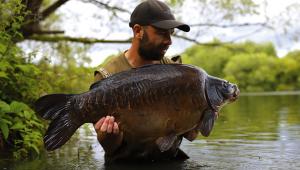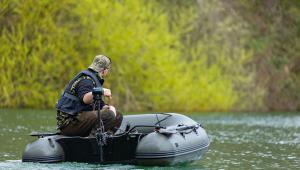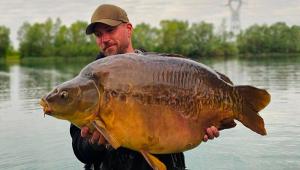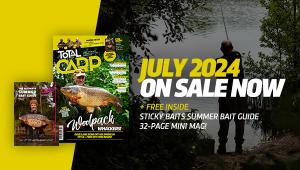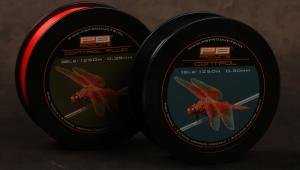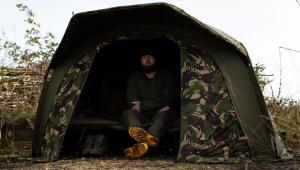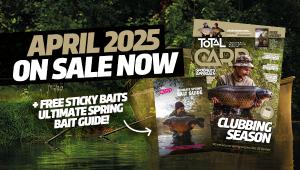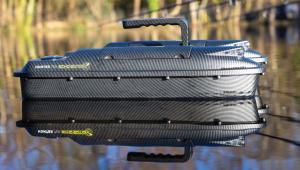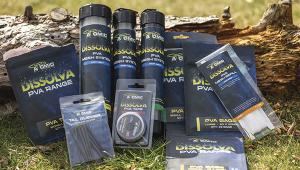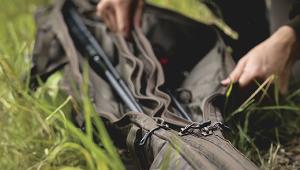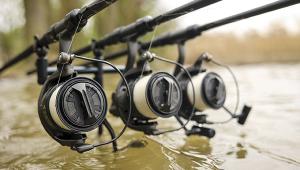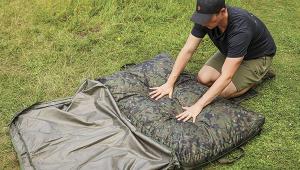10 Top Tips For Cold-Water Success
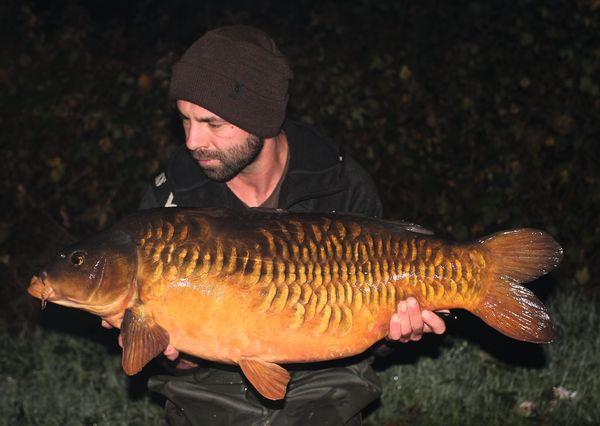
1. WINTER HOLDING AREAS
During the winter, carp will typically be looking to hold up, grouped together where they feel sheltered, safe and comfortable. If you can pinpoint these areas, there’s a good chance of getting pretty consistent action throughout the coldest months.
Features that offer physical cover are usually a good bet; dying weed beds, snags, reeds and old pads all offer some structure for the carp to hold up around. Another place to look is if there are deeper areas of the lake that may provide a bit more stability during variable conditions, or quite simply in the middle of lake. For some reason on many lakes they simply push into a central zone.
While I did mention deeper areas, it’s also always worth checking particularly shallow zones too, especially if it’s been mild or bright and sunny.
2. ZIGS
When people stop catching them on the bottom is usually a good sign that the fish are holding up mid water and so it’s around this sort of time that I will really start pursuing them with zigs.
Location is just as important when zig fishing as it is when fishing on the deck and you need to make sure you are bang on them as they will be tightly held up. If I’m fishing a bit of an egg box lake, I will often look for little depressions made by the carp – if they are fresh they may even be cleaned out. Old weed beds can be a great place to target the carp too, with a zig presented a foot or two above the weed.
Try a brighter zig in the winter to help grab their attention.
Typically I find lower zigs (from half depth to a few feet off the bottom) to be more productive in the winter, unless you get those really bright sunny days. It’s well worth spending a bit of time with a marker float around your pit to map out the depths so that you don’t need to do it when the carp are in front of you, keeping disturbance to a minimum.
As the spring progresses I tend to use tiny pieces of black foam to match the first hatches, but in the depths of winter I prefer something a little more in their face. I’ve found orange foam to work well and I also like little 10/12mm pop-ups.
3. BOOSTED SINGLES
During the coldest months I like to use really turbo-boosted hook baits – we know that the carp’s metabolism and bodily functions are severely impacted by low temperatures and that includes both their sight and sense of smell. It also means that you don’t need to rely on lots of bait to boost the attraction around the hook bait, meaning that any interest should result in a hooked fish.
I like to Goo up my pop-ups as it’s a really overpowering liquid and sometimes that’s exactly what you need for them not to ignore it! When applying the Goo I don’t like my hook baits to be swimming in it, instead preferring to give them small but regular doses over a period of time until they have properly soaked it in. This way they will continue to pump out attraction over a longer period of time.
Goo’d pop-ups often lose their buoyancy, so I tend to plug them with a bit of cork or foam to make sure they retain their buoyancy. My favoured flavours in the winter would be the Garlic and Pineapple.
Another great way of boosting the attraction around your hook bait is with a little bag of attraction, something like maggots, crumb or stick mix which pumps out plenty of attraction without giving them much to actually eat.
I'm a huge fan of goo! the Pineapple is a winter favourite.
4. REFINED RIGS
As with the last point, in the cold conditions the carp will be moving much more slowly and also feeding much less vigorously. This can make them harder to hook, so it stands to reason that you should use the sharpest hooks you can. A really sticky sharp hook has only just got to touch the flesh and it will find a grip until the carp moves off.
Unless you are very capable at hook sharpening, I’d look at ready sharpened hooks. I’ve gained a lot of confidence in the Kamakuras over the last few years and having them good to go straight from the packet saves me a lot of time and effort.
Kamakuras are a game changer, especially in winter.
The spinner hair rig is a great cold weather presentation.
A very fast reacting rig will also get you more bites and I’m convinced that a suppler hook link will allow the hook to fly into the carp’s mouth much more easily too. The spinner hair rig is perfect for winter fishing, but rather than a stiff 20lb plus fluoro link, I’ll use a much finer hook link of around the 12 to 15lb breaking strain. I’ve had lots of great cold-water success on this presentation.
5. FISHING PERIOD
Obviously fishing in the winter means being out in the cold, with long dark nights. I find to keep keen and motivated, it’s best to split your sessions up into a number of shorter sessions. For instance, rather than one 48-hour session, do two overnighters or a few days depending on when the periods of activity are.
Breaking it up also allows you to spread your sessions throughout the week. Fishing like this can be particularly beneficial by not wasting your time on the venue for long periods of inactivity. Also, if you are concentrating on one water it allows you to steadily trickle in very small quantities of bait and potentially get the carp used to feeding in certain areas without having your lines on the spot as they would be on longer sessions.
Preparation really helps on short sessions.
6. VENUE CHOICE AND SOCIAL MEDIA
Choosing the right venue for the winter months can make a big difference on how successful your winter will be. Obviously, higher stocked waters will tend to be more productive – the fish will be hungrier and you’re also much more likely to be able to actually locate them.
I also find shallower venues tend to fish particularly well in the winter, both due to how they react to weather changes (see below), but also due to the fact that the carp are never too far off the bottom and therefore more likely to pick a bait up. This also makes locating them in the water column a hell of a lot easier!
In a typical 7ft deep lake, if they are not feeding on the bottom, there isn’t a whole lot of midwater to target – you can’t go wrong with zigs ranging from two to five feet in length, as this covers pretty much the entire water column! In a lake that’s 15 feet deep, or even 30 feet deep, you not only have the area to search, but also a lot of depth!
A February capture of Nige's. Sandhurst is a prime winter water!
7. ALTERNATIVE BAITS
If you find that boilie fishing has stopped working on your water, it may be worth making them more attractive by crumbing them down and mixing them with liquids so that it releases attraction more easily, but also appears to be less of a threat than round baits.
Mixing sweetcorn in with the crumb makes a nice winter mix and provides a highly visual aspect without giving them too much sustenance. This combination passes through them really easily, but a couple of handfuls or medium Spombs is all you need anyway. The sweetcorn also makes a great alternative hook bait if the fish have been hammered on boilies.
The other alternative bait that I’ve found to be particularly effective in the cold is maggots, and not necessarily in large quantities either. A small PVA mesh bag of maggots is a great way of generating a bite and can easily be roamed around until you find the carp.
8. CONDITIONS
I’ve largely found that most places fish poorly as the weather is cooling in the autumn-winter transitionary period, but once temperatures settle out I find the carp are once again more catchable, especially if we have a mild spell push through.
In recent years we’ve been experiencing more milder winters, or at least more of these periods of milder weather. Generally, shallower waters will respond quicker to these milder periods. As such I’d certainly recommend getting a weather app and keeping an eye on any weather fronts pushing through as it can certainly get them up and moving around a bit more.
However, saying that I have still caught plenty of carp in settled periods of really baltic conditions, but I think they remain much more sedentary and you have to make sure you’re bang on them.
Mild conditions can get them moving in the depths of winter.
9. COMFORT ON THE BANK
Being comfortable on the bank really goes a long way to keeping you motivated. I really suffer from poor circulation, so following editor Matt’s advice I invested in some high quality insulated boots (I believe there will be a review in the gear section!). In combination with some quality Merino hiking socks, these have been a real godsend and I no longer get cold feet!
Learning to properly layer the correct clothing also makes a big difference to how warm and comfortable you stay when fishing, utilising clothing made from the right materials to keep you warm and dry. I always carry a properly warm insulated jacket and salopettes, waterproof outer layers and plenty of spare clothes in the motor.
I always stash a quality set of waterproofs in case.
You'll need plenty of these over the winter!
I make sure to have plenty of hearty meals, snacks and drinks, both hot and cold. I think a lot of people probably don’t drink enough fluids while on the bank and this can really affect your energy levels. I also regularly find myself having to warm my hands over the stove when I’m doing stuff like casting, where my hands are out and exposed to the elements, so I make sure to take plenty of spare gas.
10. TEAM WORK MAKES THE DREAM WORK
I’m a very solitary angler for the vast majority of the year but winter fishing is probably the one period that I’d generally make an exception to that. Fishing with a friend can benefit you in many ways and not just from the social and morale aspect. Fishing together, or as team rather, can help you cover a much wider area, locate the fish more easily and find what tactics are likely to work at that period in time. Doing all these things together will progress you much more quickly, allowing you to take greater advantage of the situation.
Now, in the warmer months it’s likely that the doubled pressure would put the carp off or move them on, but as I mentioned at the start the fish are typically held up where they are comfortable and want to be. As such, they seem to be a little more tolerant of pressure so it’s likely that you could both reap the rewards more so than just a single angler would do.
Carp are still catchable in the frostiest of conditions!
- Log in or register to post comments
